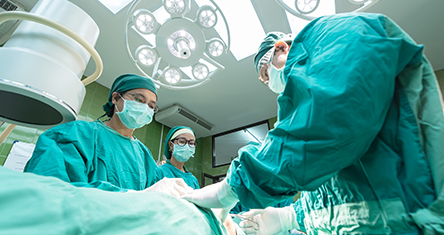There are several types of surgery associated with breast cancer:

• Lumpectomy
the tumor plus the area around it is removed. It is reserved for smaller tumors that are easily separated from the surrounding tissue. Early diagnosis is key to benefit from this less-invasive surgery that can be done in one day.
• Mastectomy
in simple mastectomy, all of the breast tissue is removed; in a radical mastectomy, though more rare today, the surgeon removes the muscle beneath in the chest wall and the nodes in the adjacent armpit; skin-sparing mastectomies leave the skin over the breast intact which can expand options for reconstruction.
• Lymph Node Removal
there are several approaches to lymph node removal depending on what is right for you.
Sentinel lymph node biopsy is removal of the lymph node(s) nearest to your breast cancer tumor that receives the drainage from the cancer tumor. This lymph node is removed and tested for breast cancer cells either during or after surgery.
Axillary node dissection is removal of several lymph nodes in your armpit. This is usually recommended when you are having a mastectomy and cancer cells are found in your sentinel lymph nodes. In cases where you are having a lumpectomy, your doctor may recommend to remove only the sentinel node(s).
Side Effects of Surgery
- Nausea and vomiting
- Infection, fever
- Wound problem
Your treatment team will give you detailed instructions when you leave the hospital to avoid or manage the side effects of your surgery.
Breast Reconstruction
Some women wish to have their breasts reconstructed following a mastectomy. This should be discussed with a plastic surgeon prior to your initial surgery because the reconstruction surgery can be performed at the same time as your mastectomy in most cases. He or she can help you decide to use a synthetic breast implant or your own tissue.